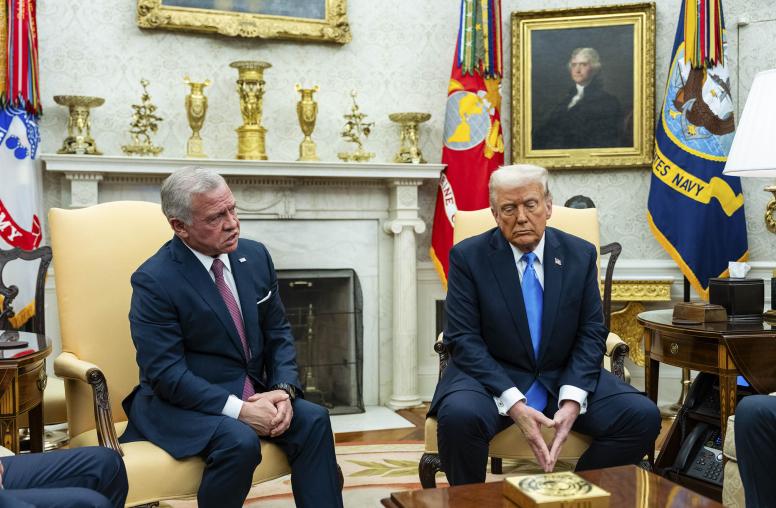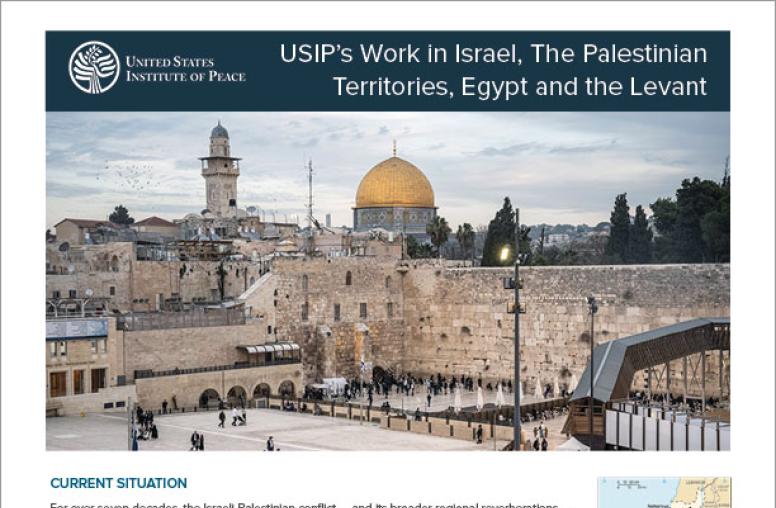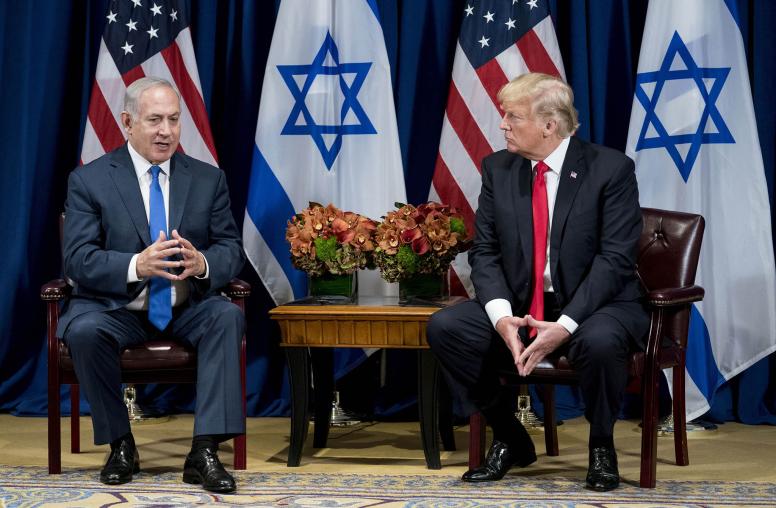As Abbas Meets Trump, This Time Might Be Different
When President Donald Trump hosts Palestinian President Mahmoud Abbas on May 3, their discussion is bound to pivot on how to get the Palestinians and Israelis back to the negotiating table in a format that will have a better-than-even chance of success. In a March telephone conversation between the two, the new U.S. leader “emphasized his personal belief that peace is possible and that the time has come to make a deal,” according to the White House.

A cynic could say “here we go again”—every administration in the past four decades has tried to secure the “deal of the century” between Palestinians and Israelis. But there are a number of factors that could make this round different.
The most glaringly obvious is the Trump administration itself. Whatever positions were advanced during the campaign, the President is now personally vested in bringing the parties together and not just delegating the issue to his cabinet. Son-in-law and Senior Advisor Jared Kushner is slated to oversee the process, and Trump sent his Special Representative for International Negotiations Jason Greenblatt, who was a campaign advisor on Israel, to the region in March to explore the possibility of restarting talks. The theme also was central in recent meetings Trump held with the leaders of Jordan and Egypt.
If the parties begin the process with the kind of maddening antics that defined the entire last round of talks under President Barack Obama, Trump could quickly lose patience and move on to other matters. Along the way, he might abandon a range of other issues also vital to each of the two sides.
For Israel, one of those issues is its very survival. In a hostile neighborhood, Israel depends on good relations with the U.S., and it badly needs continued U.S. focus on Iran and support on the global stage. To go from the poor relationship of the last eight years to another four years of the same with a different president could lead the Israeli electorate to question whether Prime Minister Benjamin Netanyahu is really up to handling the American file after all.
The Palestinians have a similar dependence. As Washington Institute analyst Ghaith al-Omari recently noted, “Abbas understands that his newfound [regional] relevance depends almost exclusively on the extent to which Washington continues to make the peace process a priority.”
Winning—or Losing—Palestinian Youth
With 67 percent of Palestinian society under 24 years of age, Abbas has an opportunity to capture the loyalty and energy of a youthful population—or frustrate them to dangerous distraction. As one of my Palestinian friends recently told me, “my generation was all about dying for our country. My kids want to live for theirs. But they want to live fully.” Abbas must deliver on these reasonable aspirations, not just continue to lead “the struggle” with tired rhetoric.
All this gives Trump leverage, particularly when combined with the reality of several key Arab states seemingly more willing to help. At the Munich Security Conference in February, Saudi Foreign Minister Adel al-Jubeir spoke positively about another peace push, saying, “My country stands ready, together with other Arab countries, to work and to see how we can promote that." Hardline Israeli Defense Minister Avigdor Lieberman, in turn, offered that "the end game is, no doubt, a two-state solution," and he said such a peace accord should be reached in a regional context.
Still, there are a number of constraints to even getting to the table. First, the political operating space on both sides is constricted. The political composition of the Israeli coalition government isn’t likely to allow much progress in a peace process, so it would have to be reshuffled to advance very far, with all the risks that entails. On the Palestinian side, Abbas has a tenuous hold on power and his ability to deliver on hard issues is limited.
Second, while Israel’s relations with several states of the region are improving, tremendous risk and uncertainty in the regional security picture makes even the Israeli Left cautious about concessions.
Finally, there is no chemistry between the leaders that would cause their citizens to believe they are serious about peace—and precious little chemistry between the societies themselves.
Applying Pressure in Stages
These realities suggest that President Trump might do well to use his leverage in stages. An initial position could seek clear statements up front by both leaders committing themselves to a two-state solution.
That could be followed by positive gestures to improve receptiveness on both sides. Israel could ease restrictions on Palestinian development and movement in Area C, the 60 percent of the West Bank that remains under Israeli control, and it could show restraint on settlements. That could be matched by proactive Palestinian action to address anti-Israeli incitement, specifically from official and affiliated sources, including political leaders glorifying, supporting or incentivizing violence.
Such constructive measures would help set the stage for talks, while building the requisite goodwill for them to succeed. These messages would communicate to the public on both sides that their leaders are serious, which in turn would breathe new life into the many civil society efforts at Palestinian-Israeli cooperation that will be needed to support any solution.
These kinds of steps also would give President Trump time to draw out the offers of Arab partners in a way that would shore up the talks when the time is right to restart them. That would begin to shift the narrative back to a sense that peace really might be possible.
There is every reason to believe this round could be different. And it would behoove Abbas—and Netanyahu, when he next meets with Trump—to be ready with seriousness and some concessions.



